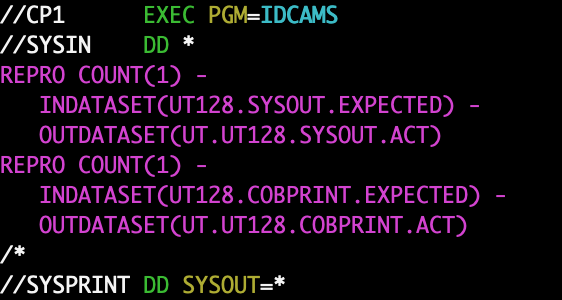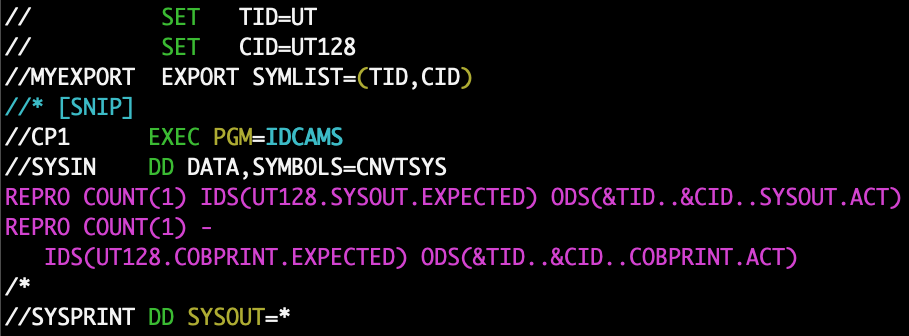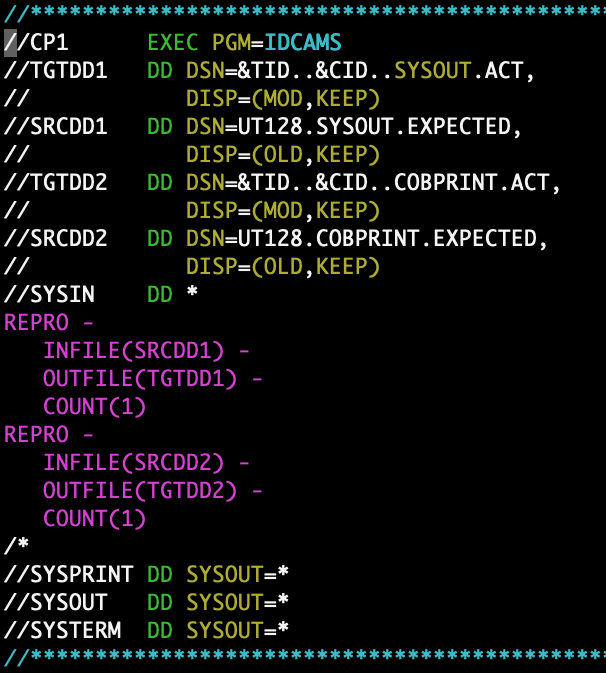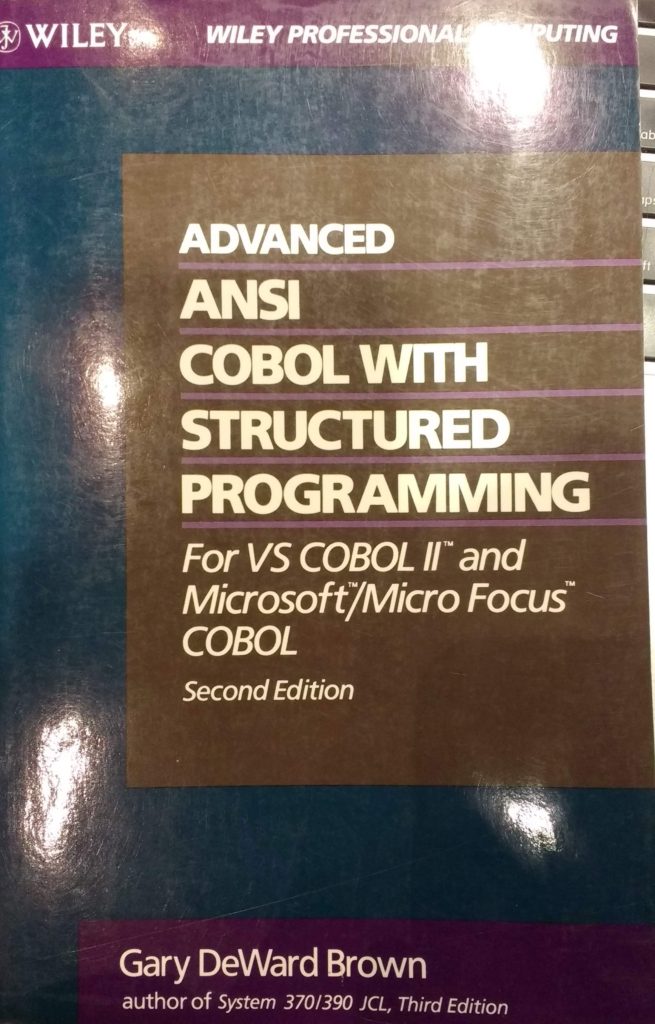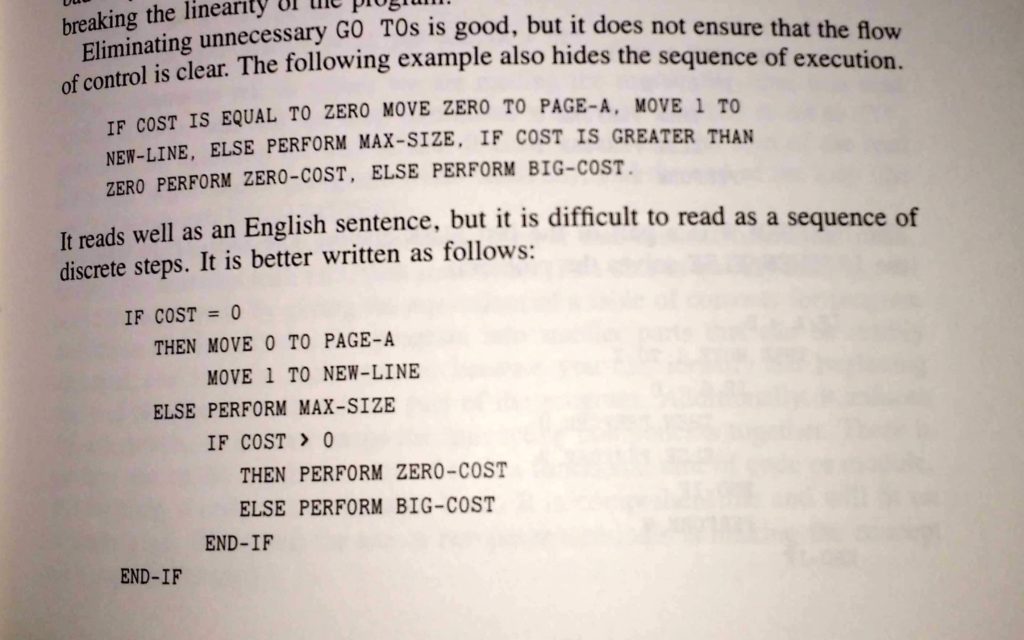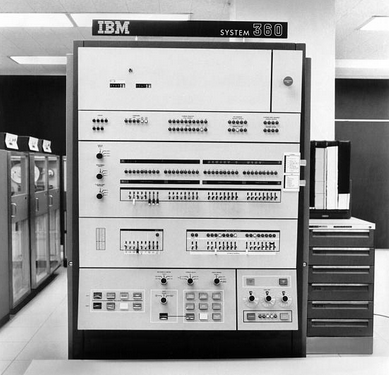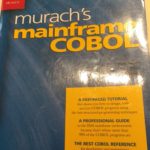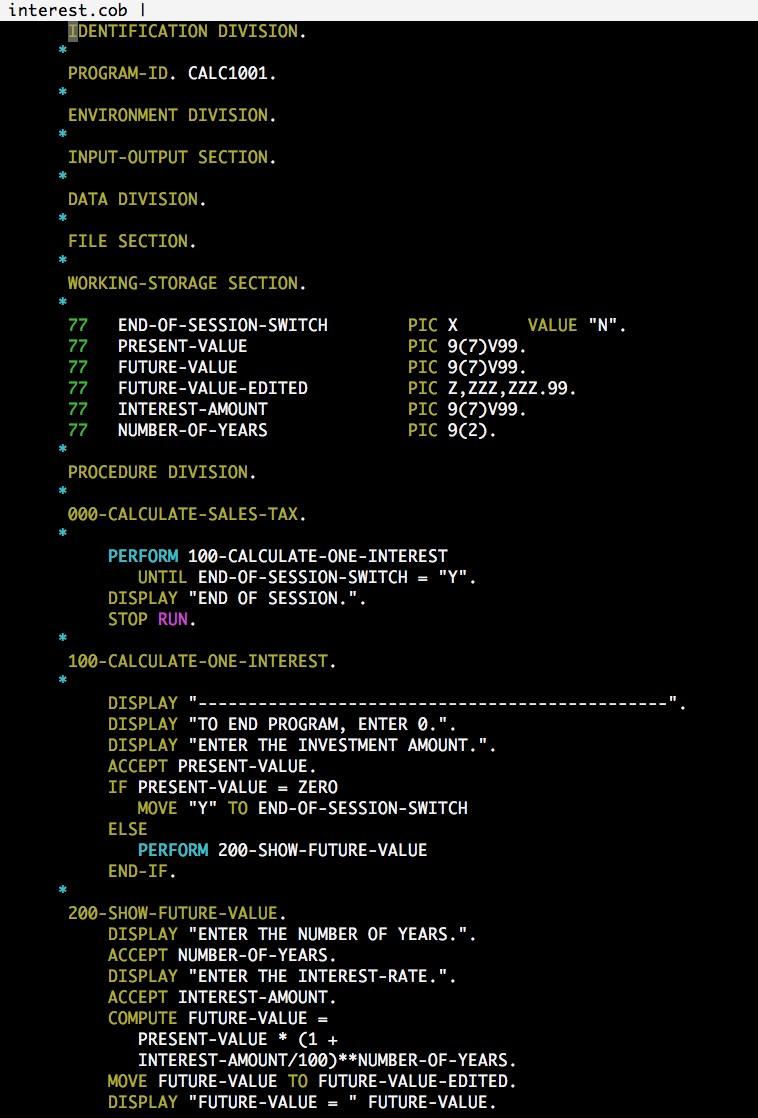I was somewhat bemused by how much JCL it took to do the equivalent of a couple ‘head -1’ commands. It was pointed out to me that INDATASET, OUTDATASET can be used to eliminate all the DD lines, and that all but the SYSPRINT DDs for IDCAMS were not actually required. This allows the JCL for these pair of ‘head -1’ commands to be shortened to:
The REPRO lines still have to be split up because of the annoying punch-card derived 72 column restrictions of JCL. Note that to use OUTDATASET in this way, I had to sacrifice the JCL shell variable expansion that I had been using. To retain my shell variables (SET TID=UT; SET CID=UT128) I still need DDNAME statements to do the shell expansion in JCL proper, since that doesn’t occur in the SYSIN specification. Translated to Unix, we must think of this sort of SYSIN “file” as being single and not double quoted (unlike a Unix <<EOF…EOF inline file where shell script are expanded). The JCL is left reduced to:
Note that since I opted to retain the DDNAME statements, the REPRO lines are now short enough to each fit on a single line.
It turns out that there’s also a way to do variable expansion within the SYSIN, essentially treating something like a Unix double quoted script variable. You need to explicitly export the symbols in the JCL prologue using EXPORT SYMLIST, and then import them in the SYSIN specification using SYMBOLS=CNVTSYS
I’ve switched to IDS and ODS to make the lines shorter, which makes it possible for one of the REPRO lines to be a one liner (with 6 lines of helper code). The final JCL line count weighs in at 8:2 vs. Unix, but is not as bad as the original JCL I constructed (22 lines.)
